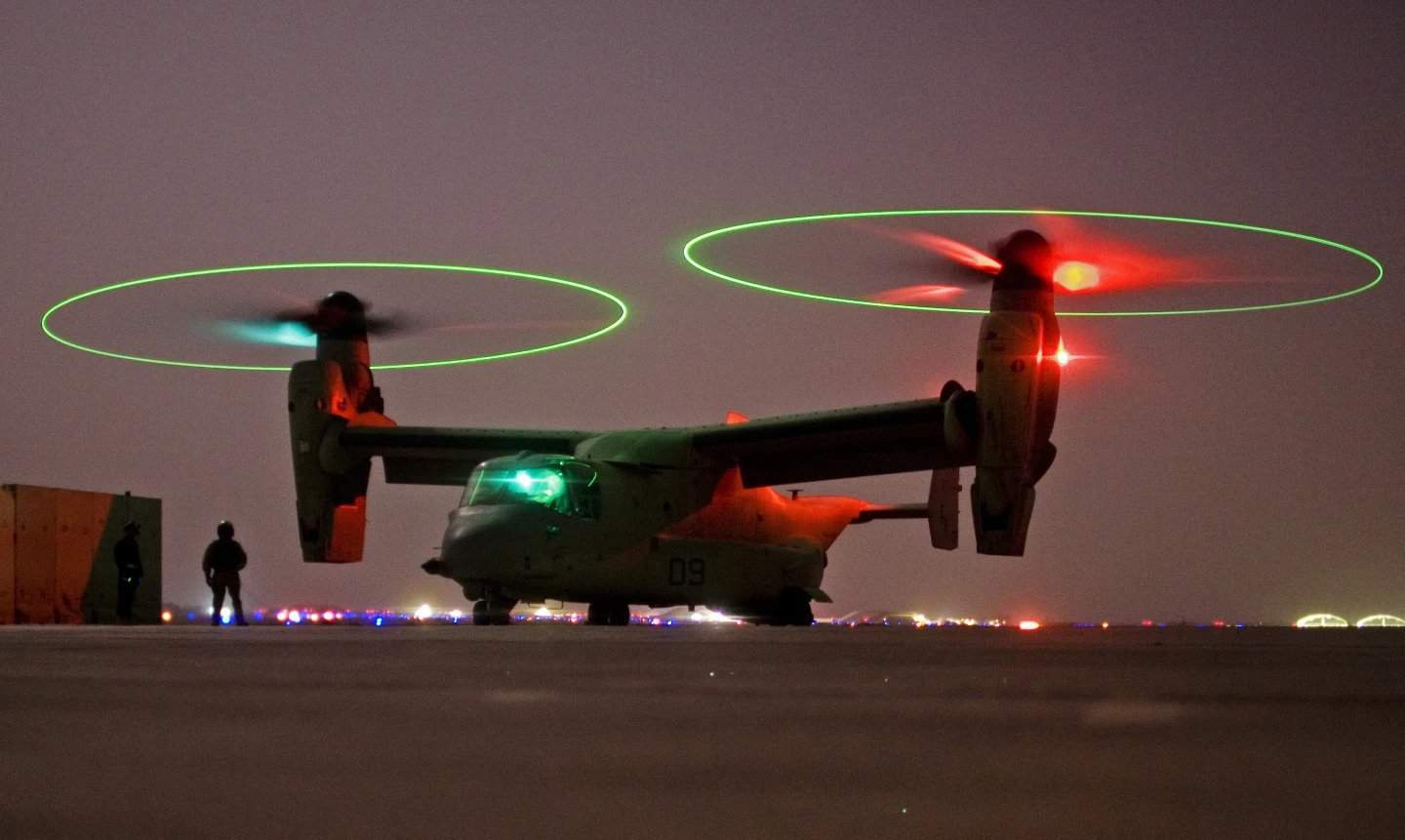
The Pentagon is again temporarily pausing flights of its fleet of V-22 Ospreys after weakened metal components possibly played a role in another near crash, the latest setback for an embattled aircraft.
The Associated Press reported on this.
The U.S. Navy, Marine Corps, and Air Force have paused or significantly limited flights of their Osprey convertibles since December 9 after defects were discovered that led to the emergency landing of the CV-22 by the Air Force Special Operations Command (AFSOC).
This refers to an incident at Cannon Air Force Base in New Mexico on November 20. The CV-22 crew received a malfunction warning from the onboard system shortly after takeoff, after which one of the engines failed. The crew managed to react quickly and land the convertible on the ground.
The media’s sources shared that this flight pause remains uncertain, as the relevant services are still investigating the cause of the malfunction. An initial investigation revealed that one of the metal parts in the engine had split, while others showed signs of “metal fatigue.”
It is understood that the malfunctions were similar to those that led to the crash of the Osprey in Japan last November but occurred in other components. A year ago, the engine of the aforementioned convertible failed due to gear failure, which led to a cascade of malfunctions.

The problematic parts were made of X-53 VIMVAR alloy. During the investigation of the accident in Japan, investigators discovered that the metal mechanism that failed had numerous inclusions or microscopic weaknesses in the metal caused by foreign substances that had mixed during the manufacturing process. These weaknesses can lead to cracking.
After the crash in Japan, investigators reported that there had been seven previous incidents with cracked gears that were likely caused by the same weak metal. Since then, the military and the manufacturer Bell Flight have been looking for ways to solve the problem.
The V-22 Osprey was the first mass-produced convertible airplane in the world. It has established itself as a military transport capable of flying at airplane speeds and performing helicopter landings. However, it has also become known as one of the most problematic aircraft in the United States. Since it started operating in 1989, 64 people have been killed and 93 injured in more than 21 air crashes.
To evaluate its safety, the Associated Press analyzed thousands of pages of accident reports and flight data, interviewed over 50 current and former program officials, crew members, and experts, and flew both simulator and real-world training flights.
Unlike other aircraft, the Osprey’s problems have not diminished over the years; instead, they have increased dramatically even as the number of flight hours has decreased. The frequency of the three most serious types of incidents increased by 46% between 2019 and 2023, while overall safety problems jumped 18% over the same period.
The AP found that the rise in safety issues over the past five years has mostly involved the Osprey’s engine or drive system. There were at least 35 instances where crews experienced an engine fire, loss of power, or complete shutdown. 42 problems were related to the rotors. At least 72 cases involved gears inside the transmission or drive system.
According to experts, the design of the convertible airplane with rotary nacelles stresses critical components inside, especially in helicopter mode, and these parts wear out faster than expected. In vertical operation, all engine and transmission components operate at maximum capacity as they “pull” the aircraft’s full weight.

Given the critical loads in vertical operation, takeoff and landing of the V-22 is one of the most dangerous stages of a convertible airplane flight. Accident statistics also evidences this:
Despite the significant problems, the authors of the study noted that former and current V-2 pilots-even those who have lost friends in accidents or have been in accidents themselves-are among the biggest advocates for the convertible.
“There’s no other platform that can do what the V-22 can do,” former Osprey pilot Brian Luce, who survived two crashes, said.
Підтримати нас можна через:
Приват: 5169 3351 0164 7408 PayPal - [email protected] Стати нашим патроном за лінком ⬇
Subscribe to our newsletter
or on ours Telegram
Thank you!!
You are subscribed to our newsletter